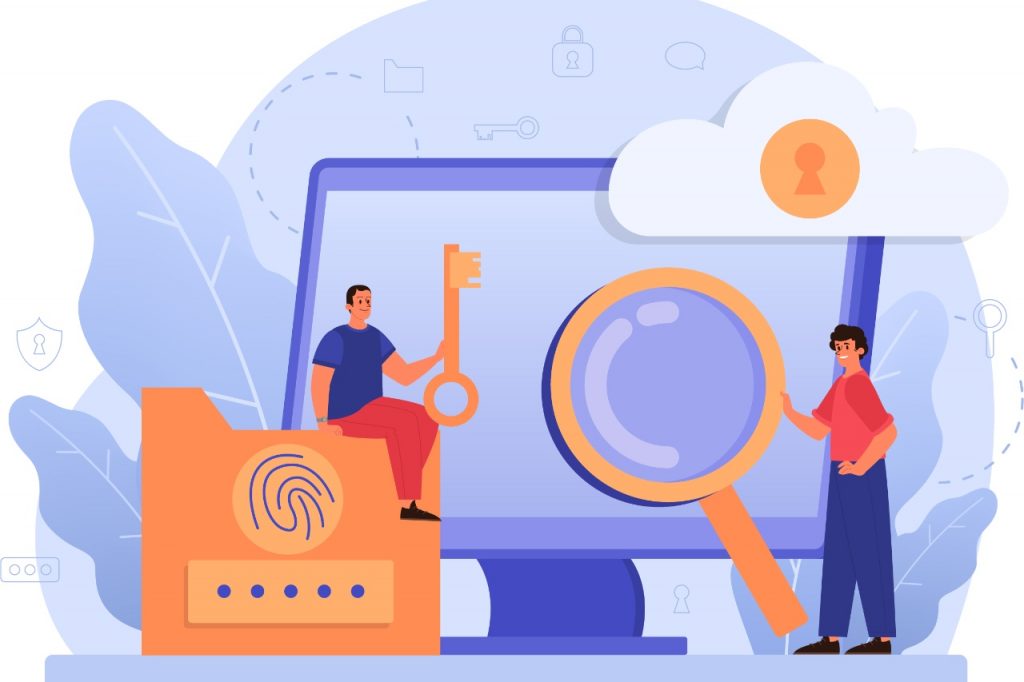While the process is pretty simple, ransomware leads to hours of downtime while businesses try to find the best solution. GovTech reports that in 2018, businesses lost around $8,500 an hour due to ransomware downtime. Large companies might choose to pay the ransom to release the files as quickly as possible, but for smaller businesses and startups, how can you protect and fight ransomware attacks?
5 Tips to Protect Your Business from Ransomware
Regular Data Backup
By regularly backing up data to an external server, you can reduce the value of the files ransomware encrypts – meaning your business can afford to lose the files and save a pretty penny on the ransom fee. If files are backed up, they can still be safely retrieved even if the original copy is lost. To ensure the backed-up data isn’t also victim, files should be saved in read-only format and cannot have any encryption assigned to them, so the files can be easily accessed when needed.
Proper Staff Training
Between 2017 and 2019, the amount of ransomware entering business networks via phishing emails increased by 109%. Proper staff training can quickly resolve the issue and reduce the risk. Phishing emails trick users into clicking on a – what looks to be legitimate – link or downloading a file. This is how the ransomware accesses the device, and the attack begins. With a little simple training, staff can protect themselves – and the company – from future attacks. Regular training for all staff should be required, including advice on identifying malicious emails, using a VPN, and safely connecting devices like USBs to the network.
Implementing Multi-Factor Authentication
Not all employees are based in a single office. IT departments often use remote access software to be able to help employees fix any IT issues they’re having, install updates and implement security checks. However, this remote access can also be used by ransomware operators if login credentials are stolen or miraculously guessed. Using multi-factor authentication for all users and encouraging staff to create more complex password combinations can quickly reduce the chance of cybercriminals gaining access.
Keep Security Software Up-to-Date
Of course, this goes without saying. But you’d actually be surprised how many businesses delay updates and, as such, put themselves at risk. As cyberattack technology advances, security services release vulnerability patches to help their clients stay safe from the most recent developments. But as updates can often require downtime or reduce computer speed, many departments are expected to delay updates. Some of the most well-known cyberattacks in history were due to a delay in updating patches, so making sure your security is as up-to-date as possible will reduce your risk of being exploited.
Anti-Ransomware Software
One easy way to ensure you’re safe from ransomware is by using anti-ransomware software. But this is where installing the vulnerability patches is so important: Anti-ransomware software can only protect you against ransomware that’s already known. When new threats are created, software providers will bring out patches to fight against them. But they only work if they’re installed! Anti-Ransomware works to encrypt files and data on the system once they have been scanned for suspicious activity. If nothing suspicious is found, the file is encrypted and protected from potential threats. If something is found, encryption will stop and be flagged. Although ransomware operators are constantly researching new tricks, anti-ransomware is your first step to protection. Ransomware can fall through the cracks but at a much-reduced rate. It’s worth mentioning that anti-ransomware is different from anti-virus – so don’t think your single software offers you full protection. Anti-malware software – or ransomware-specific tools – are a much better option for this type of attack, so you should ensure your business is protected from viruses and malware all at the same time. Anti-ransomware tools can also be used to scan emails before they are opened, or if employees get the feeling malicious software could be lurking.
Takeaway
Protection against ransomware is a continued struggle. But by training staff, installing the right tools, and regularly backing up your data, you can negate the impact an attack could have on your business.
